
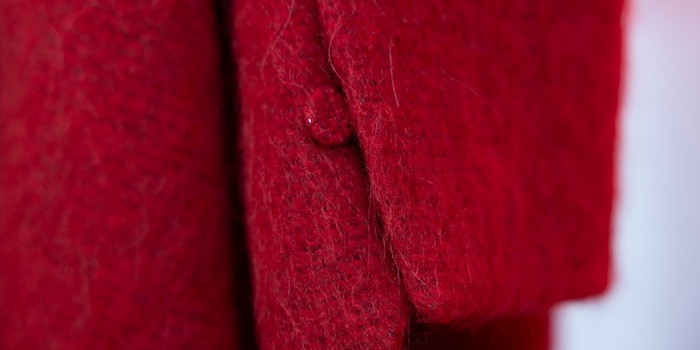
Power, rebellion and passion: the history of red clothing
Red clothing has been used as a non-verbal means of communication for thousands of years. Let me take you on a journey through the history of the colour red in fashion – from the first ever piece of dyed fabric to the recent red trend.
Go back to the origins of human creativity and you’ll find the colour red – and a warthog. Over 45,000 years ago, humans painted the animal on a rock face in the Indonesian Leang-Tedongnge cave using red ochre pigments, thus creating the oldest known cave painting. The colour red, however, didn’t just give rise to the art of painting. It also marks the origins of dyeing fabrics. The earliest evidence of dyed fabric dates back to the Neolithic period, or, more precisely, to one of the first large settlements in world history: Çatalhöyük. There, in what’s now part of modern-day Turkey, scraps of fabric containing traces of red pigment were unearthed. They prove that humans have been dyeing fabrics for around 8,000 years.
The most expensive dye in the world
«In the past, people would extract red pigments from minerals, plants such as madder, and even animals,» explains lecturer Andrea Krieg, Fashion History lecturer and head of the Fashion Stylist programme at the STF Swiss Textile College. Cochineal scale bugs, for example, have been used on the American continent to make bright red dye since before the birth of Christ. In the 16th century, the Spanish brought the insect over to Europe. Even today, the carmine dye obtained from the critters is still widely used. However, as Andrea Krieg explains, it’s mainly used in the food and cosmetics industries: «Nowadays, the textile industry tends to use synthetic colour pigments.»
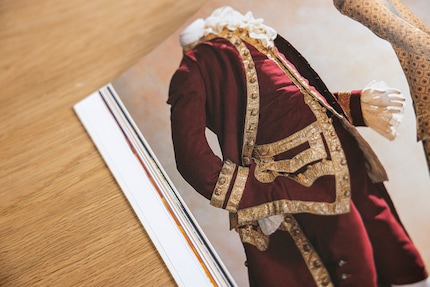
Source: Christian Walker
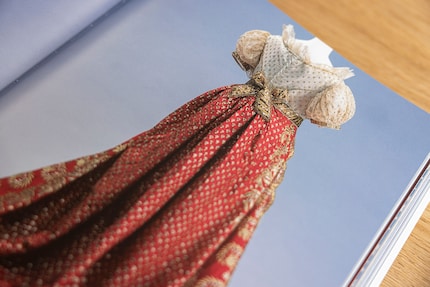
Source: Christian Walker
When mid-19th century industrialisation sparked the invention of synthetic dyes, colourful fabric became widely available. Until this point, red garments had been the preserve of the rich. Incidentally, the most expensive dye in the world today is a shade of red. Tyrian purple, a rich mix of red and purple, is extracted from purple snails and costs several thousand francs per gramme. In ancient Rome, only the emperor was allowed to wear such a sumptuous colour. Priests, senators and equites (basically the wealthy, equestrian class) also had the privilege of being allowed to attach a purple stripe to their toga. «This was when the colour red became firmly established as an indicator of high rank and status in society,» Krieg explains.
Cardinals and queens
In the Middle Ages, rich shades of red weren’t just expensive, they were also difficult to process. Master dyers were the only ones with a command of the craft. As a result, deep red clothing was mostly worn by the wealthy and the clergy. In Christianity, red symbolises the blood and passion of Christ. That’s still the case today – cardinals wear red, bishops magenta. Krieg adds: «The upper classes wanted to distinguish themselves from common people through their clothing. Until the late Middle Ages, those in power tried to control who was allowed to wear what by issuing decrees. Interestingly, these laws varied from city to city.»
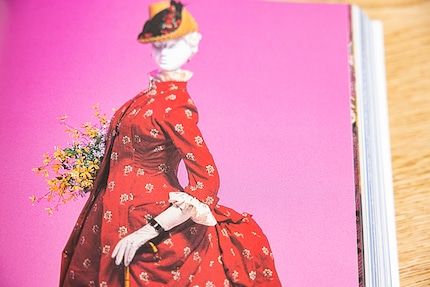
Source: Christian Walker
In the centuries that followed, red remained a firm favourite of the ruling classes, exuding dominance and wealth. Monarchs were keen to pose for portraits wearing the colour, from Queen Elizabeth I in her magnificently embroidered red dresses to the Sun King Louis XIV in his red, heeled shoes and tights. Red tights, by the way, were a big hit with 17th-century men. They’re currently back in vogue, albeit mainly in women’s fashion this time.
Revolution and eroticism
When Europe’s monarchies began to crumble at the end of the 18th century, red became increasingly associated with rebellion. During the French and Russian revolutions, the colour was hugely symbolic. This rebellious spirit later found expression in the subcultures of the 20th century, particularly in the punk movement.
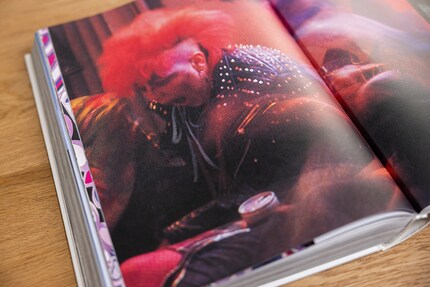
Source: Christian Walker
The film industry latched on to the symbolism too. James Dean, for example, cemented himself in pop culture memory as a rebellious teen in his iconic red jacket in Rebel Without A Cause. The «lady in red» trope is also deeply rooted in contemporary pop culture, representing charisma, sensuality and seduction. In The Matrix, the woman in red represents an alluring but dangerous distraction. In Pretty Woman, the scene where protagonist Vivian Ward appears in her red evening gown represents a key moment in her character arc. Not only does the dress emphasise the sex worker’s outward transformation, it also conveys her newfound self-confidence and social standing.
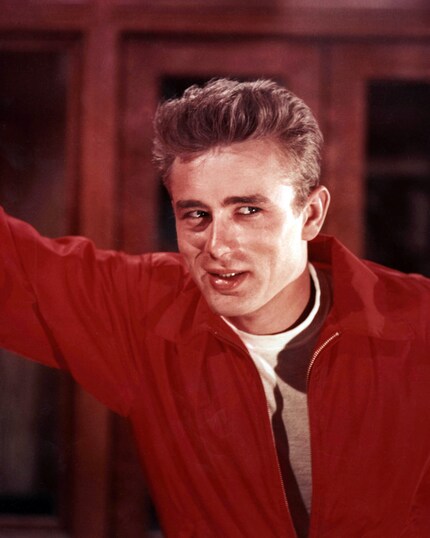
Source: Warner Bros. Pictures
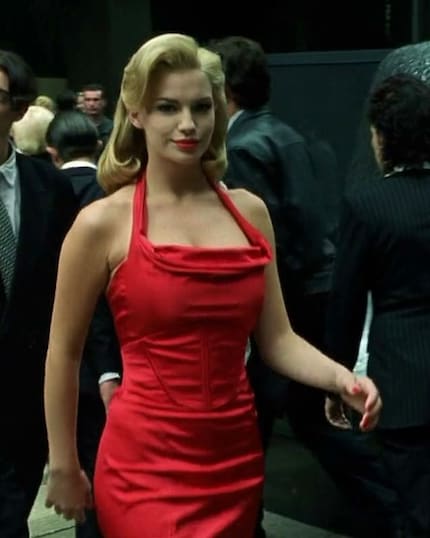
Source: Warner Bros. Pictures
Red stimulates our nervous system
The colour red evokes quite a number of strong associations. However, there’s one common thread running through the colour’s millennia-long history: intense emotions. Andrea Krieg explains: «Highly saturated red tones are loud. They take up a lot of space. This makes them a powerful way of communicating nonverbally, attracting attention and triggering strong emotions.»
Fashion psychologist Shakaila Forbes-Bell provides a scientific explanation for this in her book Big Dress Energy. Colours are different wavelengths of visible light. Red is the colour with the longest wavelength. In her book, Forbes-Bell explains that long-wave colours stimulate the autonomic nervous system (ANS), which is responsible for regulating our blood vessels and internal organs. The sympathetic and parasympathetic nervous systems work together as parts of the ANS to either increase or slow down activity within our bodies. It’s an unconscious process, with a major influence on our relaxation and stress levels.
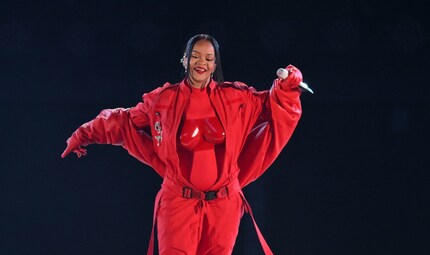
Source: Keystone/AFP/Angela Weiss
Long-wave colours, especially red, activate the sympathetic nervous system and kick our bodies into gear. They can make you feel more sociable, extroverted and energetic. Forbes-Bell also references studies demonstrating that red clothing can have a positive effect on athletes’ performance and make people appear more attractive.
Showy, but still a classic
As in-your-face as red might be, the colour is an undeniable classic. Despite its showiness, it’s currently being used as a statement colour by minimalist brands such as The Row and Ferragamo. Even designer Yohji Yamamoto, who works predominantly with black, occasionally adds bright red accents. The fact that red is the colour of choice for a man who loathes trends speaks volumes about its timeless character.
However, few designers are as well known for their love of red as Valentino Garavani. The 91-year-old Italian rose to prominence on the fashion scene in the 1960s and even created his own shade of red: Valentino Rosso. In 2022, a book of the same name was published, documenting the Valentino fashion house’s work with the colour. It describes how Garavani, while watching the opera Carmen at a young age, was hit by the realisation that besides black and white, there’s no better colour than red. He described it as strong, yet neutral, going on to say that it symbolised life, passion and love. «It’s the cure for sadness,» the fashion designer once reportedly said.
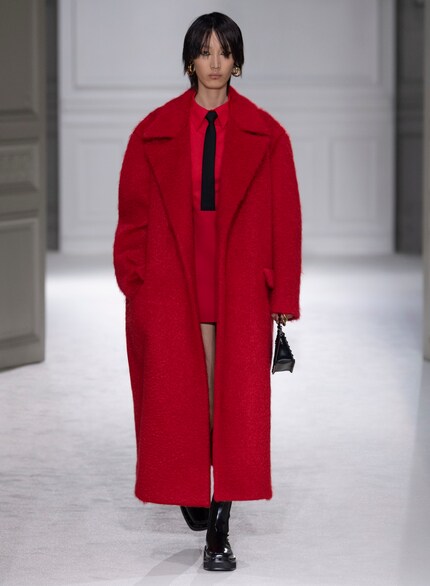
Source: Launchmetrics/Spotlight
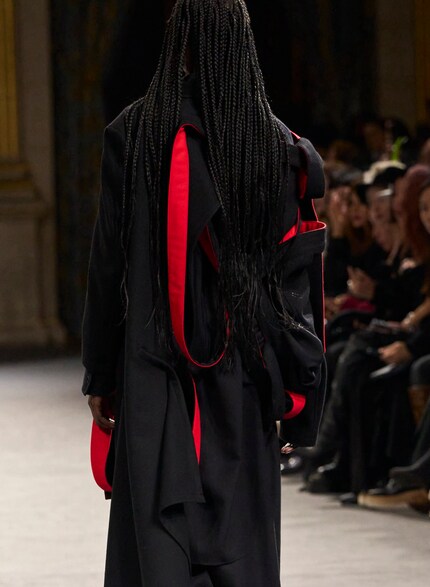
Source: Launchmetrics/Spotlight
In these uncertain times, is this the very reason why red is enjoying a fashion revival? «I can imagine that a classic red radiates a certain sense of stability and security for many people,» Krieg says. «Bright red is an easy colour to understand. We all know what it means. It’s a clear, familiar tone.»
These two books served as a source for this article:


Geschichte der Mode vom 18. bis zum 20. Jahrhundert
German, Kyoto Costume Institute (KCI), 2019
This article was created as part of our Focus Week on the colour red. Seven days, seven articles. You can read more about this and all the articles published so far here:
Header image: Christian Walker
Has endless love for shoulder pads, Stratocasters and sashimi, but a limited tolerance for bad impressions of her Eastern Swiss dialect.
Interesting facts about products, behind-the-scenes looks at manufacturers and deep-dives on interesting people.
Show allThese articles might also interest you

Background information
Stone Age mattresses, alcohol and pillow favourites - five sleep episodes
by Martin Jungfer
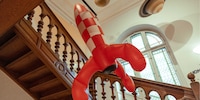
Background information
A visit to Switzerland’s only children’s museum
by Martin Rupf
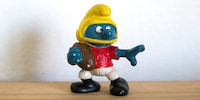
Background information
Are you sitting on a gold mine? Valuable collector’s items from the nursery
by Michael Restin
